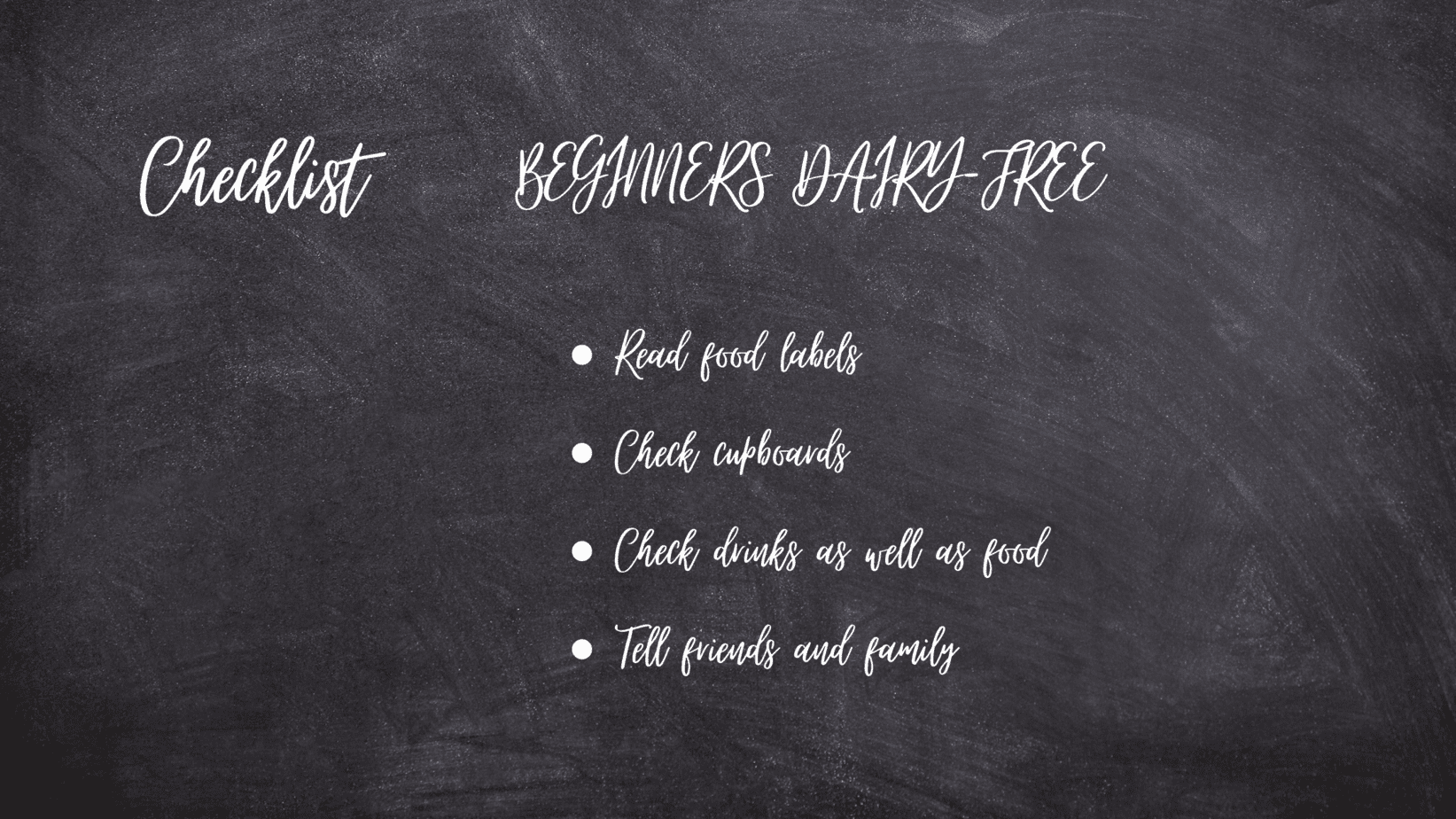
If you are new to a dairy-free diet you may be unsure of where to start. It may feel daunting at first but with a little patience, you will soon find you are able to navigate a dairy-free diet. If you are unsure, here are some suggestions of where to start.
- Always follow medical advice.
- Take advice on ensuring a balanced diet, including calcium, especially for children.
- Find a list of dairy products and their derivatives to avoid.
- Learn to read food labels and understand labelling laws.
- Have separate chopping boards and utensils if cross-contamination is an issue.
- Do an audit of food in your cupboards, fridge and freezer.
- Tell anyone who needs to know and have an action plan in place if you or someone you care for is anaphylactic.
Beginners Guide for a Dairy-Free Diet
Always follow medical advice for a balanced diet
It may be a lifestyle or a medical requirement, but either way, you should follow medical advice before cutting out a food group. You should be advised on specific dietary requirements. In particular, you will need to ensure you include alternative sources of calcium, and vitamins, especially vitamin D and iodine. There is plenty of fortified dairy-free milk to choose from which will help replace some of these.
Find a list of dairy products and their derivatives
Apart from the more obvious foods that are dairy, such as milk, cream, cheese and yogurts, there are quite often, ingredients that are derived from milk that are not so obvious. Your GP or hospital should be able to give you the current list of what is considered dairy, but there are also some great resources available online. I can highly recommend Allergy UK as first place to check for any information but you should always follow your medical practitioner’s advice. For further reading please see the following websites or follow the links below.
Learn to read food labels and understand labelling laws for the UK
The good news is that dairy is an allergen which is required to be listed on food labels by law. However, the way that information is presented will differ depending on where you are. Prepacked food and drinks should have dairy allergens clearly highlighted but it will be different in shops such as a bakery and cafe’s and restaurants have different rules. It is worth noting that alcohol can contain milk or its derivatives so be sure to check labels on everything. The government here in the UK, via the Food Standards Agency sets the rules on how food should be labelled. I don’t want to confuse the issue so I have linked the website page below.
It’s important to know that food labelling laws are not universal so if you are travelling abroad, you should make sure you know the rules according to the country you are visiting.
Never Assume
Just because you checked a label last week, does not mean it is ok this week. Manufacturing processes change all the time so it is important to check labels every single time. A good tip is to always keep a supply of your favourite snacks at home, so you don’t miss out.
Is cross-contamination an issue?
You should know if cross-contamination is an issue. For some people, cross-contamination isn’t an issue but for others, it can be life-threatening. That applies equally to any foods you buy when eating out or prepare at home. If you do need to avoid cross-contamination at home then you should consider having separate utensils for food preparation, eating and drinking. If space permits, then perhaps you can have a dedicated area of your kitchen where you only prepare non-dairy food and drinks. Keep these utensils separate and wash them up separately at all times.
Check your cupboards, fridge and freezer
One of the first things to do, when you are beginning a dairy-free diet is to audit what food you have in your cupboards, fridge and freezer. Check all foods and separate anything containing dairy. If you don’t want to remove them from your home completely, then perhaps you can dedicate a specific shelf, drawer or cupboard to dairy items. Make sure everyone in the home knows that there are spaces dedicated to dairy and non-dairy food and drink.
Action plan for dairy allergy
If you or someone you care for is anaphylactic then you should have a plan in place to recognise symptoms of anaphylaxis and what to do in an emergency. Make sure that everyone involved in care, knows what to do. Consider sticking a copy of your action plan where it is easily seen. Maybe the fridge door? But ensure it doesn’t get obscured by anything else you may stick on the door! There are some excellent websites giving advice on anaphylaxis and I have linked several of them below.
A final point to note
A final point to make in this Beginners Guide for a dairy-free diet is about lactose. I’ve read so many times in forums where people new to being dairy-free don’t realise that products labelled as lactose-free do still contain dairy.
This Beginners Guide for a Dairy-Free diet has been written from personal experience and should not be regarded in any way as medical advice.


